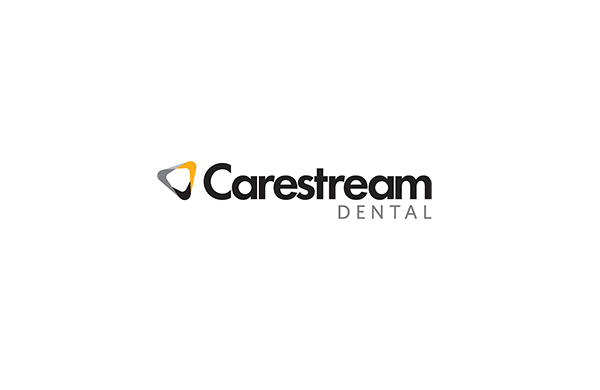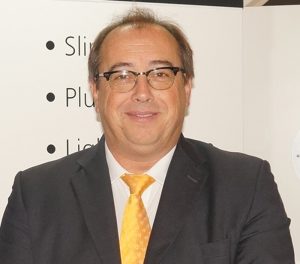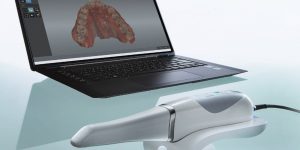Smart, sustainable, streamlined – David Claridge Carestream Dental
Featured Products Promotional FeaturesPosted by: Dental Design 9th December 2019

 As the recent “Extinction Rebellion” protests attest, many people regard environmental damage, primarily climate change, as the most serious issue of our time. These concerns are not purely matters of conservation and damage mitigation – Britain’s infrastructure is barely coping with current demands, let alone the additional challenges that the future will bring. Both the primary effects of human-driven environmental impact, in conjunction with the way in which our society responds through legislation and market forces will have repercussions that will be felt across every sector, including health care. There is the prospect of red tape to be sure, but there are also opportunities for dental laboratories and their clients to get ahead of the curve and reap the benefits of greater efficiency.
As the recent “Extinction Rebellion” protests attest, many people regard environmental damage, primarily climate change, as the most serious issue of our time. These concerns are not purely matters of conservation and damage mitigation – Britain’s infrastructure is barely coping with current demands, let alone the additional challenges that the future will bring. Both the primary effects of human-driven environmental impact, in conjunction with the way in which our society responds through legislation and market forces will have repercussions that will be felt across every sector, including health care. There is the prospect of red tape to be sure, but there are also opportunities for dental laboratories and their clients to get ahead of the curve and reap the benefits of greater efficiency.
For dental laboratories there are three primary areas of environmental impact: energy, transport and waste.
Waste
Dental laboratories and practices inevitably produce waste, some of it hazardous. If improperly disposed of, heavy metals used by dental labs can contaminate soil and water and cause potential health hazards. For example, chromium can cause liver, kidney and respiratory damage.[1]
Efforts to substantially reduce medical and production waste, are challenging due to technological limitations and necessary standards. However, more mundane office waste, such as paper and packaging, can be reduced with relative ease by switching to digital alternatives, eliminating unnecessary packaging and re-using boxes.[2]
Transport and energy
Britain’s road network is the tenth most congested in the entire world, while London is more gridlocked than any other European city bar Moscow.[3] Not only does congestion have knock-on effects on pollution, with idling cars emitting more carbon, it reduces productivity due to journeys taking more time. In terms of pollution, carbon emissions are not just a problem due to their contribution to climate change – the toxic effect of air pollution on humans is increasingly being recognised as a major health hazard. Chronic exposure to fine particulates has deleterious effects on our vascular system, causing inflammation, oxidative stress and increasing the chance of arterial hypertension, heart attacks and stroke. A recent study estimated that, on average, air pollution shortens the lives of people living in Europe by over 2 years. The study authors calculated that drastically reducing fossil fuel related emissions, in line with the target set out under the Paris Agreement, would increase the average life expectancy in Europe by around 1.2 years.[4]
Electric vehicles only go some way towards improving this situation, and converting haulage from diesel to electric presents considerable technical and economic challenges. In battery powered vehicles, the burden of power generation gets shifted from combustion engines to the grid (which is itself still fossil-fuel dependent). A single electric truck requires around 1 MWh per charge, a draw on the grid equivalent to thousands of houses at a time. It is estimated that were Europe’s trucks replaced with battery powered vehicles, they would require more than 10% of all the power currently generated across the region (purely to run, not including the energy required for overhauling the infrastructure, etc.).[5] Where possible, reducing the number of vehicles on the road is the best solution to this problem.

Impressions
In the traditional impression taking model, dental laboratories were sent physical impressions via post or courier, after which the lab would produce the required restoration before sending it back to the practice. Digital impressions can be sent instantly, immediately cutting half of the transport burden and eliminating the need for impression material and trays. This is further magnified when an error in the impression has occurred. Rather than having to repeat the whole cycle (which also required patients to attend a second appointment), with a digital scan, it’s possible for a laboratory technician to look over the impression practically in real time – providing them with a chance to inform you if a retake is necessary, potentially before the patient has even left the practice (saving additional journeys, not to mention patient frustration). Not only does this greatly increase turn-around, it’s considerably more environmentally friendly.[6]
While many practices have already invested in intraoral scanners, some remain to be convinced of the transformative effect they can have on efficient and effective laboratory collaboration. Upgrading to a high-quality intraoral scanner, brings many benefits not the least being patient comfort. Completely removing the need for a physical impression to be made and sent to a laboratory (let alone the occasional retake) brings a host of benefits including reducing material waste and streamlining the process for all parties.
The CS 3600 from Carestream Dental offers superior full HD 3D scans that are quicker and clearer than ever before. The CS 3600 offers outstanding precision, attaining higher trueness values than rival scanners.[7] Thanks to its open system architecture it is compatible with any CAD software that uses STL files, keeping collaboration hassle free.
By switching to digital impressions, dental practices and laboratories can work together in a more sustainable and efficient way – making for a bright future for both.
For more information, contact Carestream Dental on 0800 169 9692 or visit www.carestreamdental.co.uk
For the latest news and updates, follow us on Twitter @CarestreamDentl and Facebook
[1] Haralur S., Al-Qahtani A., Al-Qarni M., Alhomrany R., Aboalkhair E., Sujatha M. The dental solid waste management in different categories of dental laboratories in Abha City, Saudi Arabia. The Open Dentistry Journal. 2015; 9(1): 449-454. http://dx.doi.org/10.2174/1874210601509010449 August 22, 2019.
[2] Avinash B., Avinash B.S., Shivalinga B., Jyothikiran S., Padmini M. Going green with eco-friendly dentistry. The Journal of Contemporary Dental Practice. 2013; 14(4): 766-768. https://doi.org/10.5005/jp-journals-10024-1400 August 22, 2019.
[3] UK must tackle ‘astonishing’ cost of congestion, study says. BBC News. 2018. https://www.bbc.co.uk/news/uk-42948259 August 15, 2019.
[4] Lelieveld J., Klingmüller K., Pozzer A., Pöschl U., Fnais M., Daiber A., Münzel T. Cardiovascular disease burden from ambient air pollution in Europe reassessed using novel hazard ratio functions. European Heart Journal. 40(20): 1590-1596. https://doi.org/10.1093/eurheartj/ehz135 August 22, 2019.
[5] Earl T., Matheiu L., Cornelis S., Kenny S., Ambel C., Nix J. Analysis of long haul battery electric trucks in EU: marketplace and technology, economic, environmental, and policy perspectives. 8th Commercial Vehicle Workshop. 2018. https://www.transportenvironment.org/sites/te/files/publications/20180725_T%26E_Battery_Electric_Trucks_EU_FINAL.pdfAugust 22, 2019.
[6] Arora S., Mittai S., Dogra V. Eco-friendly dentistry: need of future. An overview. Journal of Dental & Allied Sciences. 2017; 6(1): 22-27. http://www.jdas.in/text.asp?2017/6/1/22/205446 August 22, 2019.
[7] Managano F., Hauschild U., Veronesi G., Imburgia M., Mangano C., Admakin O. Trueness and precision of 5 intraoral scanners in the impressions of single and multiple implants: a comparative in vitro study. BMC Oral Health. 2019; 19: 101. https://bmcoralhealth.biomedcentral.com/articles/10.1186/s12903-019-0792-7 August 15, 2019.










